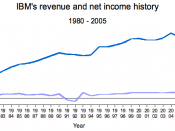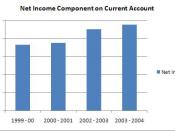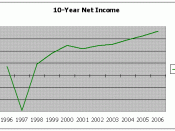I will use liquidity ratios (working capital, current ratio, and quick (acid-test) ratio) to determine how much cash is available for the Ford, Microsoft, and ExxonMobil companies to pay their current debts? Liquidity is the company's ability to convert noncash assets into cash or to obtain cash in order to meet current liabilities (Shim, Siegel, 1999, p.276). (Note: All dollar amounts are in the millions and are cited directly from the annual reports listed in the references) Working Capital is equal to current assets less current liabilities. It is a safety cushion to creditors. A greater balance is required when the activity has difficulty borrowing on short notice (Shim, Siegel, 1999, p.276). The Ford company had a working capital of ( - $4,528 ) in 2002 ( $40,764 - $45,292 ) and ( -$11,434 ) in 2001. The increase in working capital is a favorable sign; however, both years resulted in a negative working capital and spells trouble for Ford.
The Microsoft Company had a working capital of $44,999 in 2003 ( $58,973 - $13,974 ) and $35,832 in 2002. The increase in working capital is a favorable sign and allows Microsoft to be in good shape. The Exxon Mobil company had a working capital of $5,116 in 2002 ( $38,291 - $33,175 ) and $5,567 in 2001. The decrease in working capital and the low working capital could spell trouble for ExxonMobile.
The current ratio is equal to current assets divided by current liabilities. It is used to measure the ability of an enterprise to meet its current liabilities out of current assets (Shim, Siegel, 1999, p.276). The limitation of the ratio is that it may rise just prior to financial distress because of a company's desire to improve its cash position by, for example, selling fixed assets.


